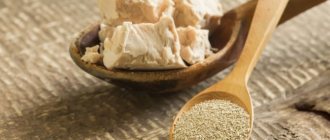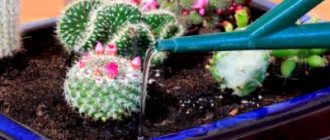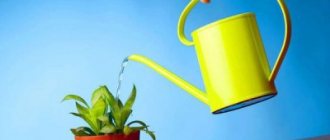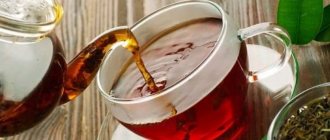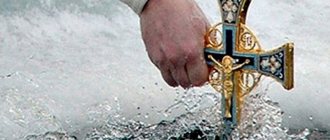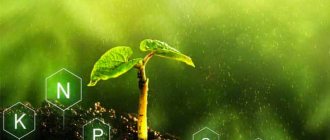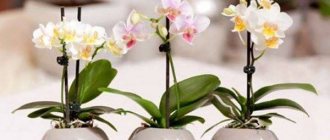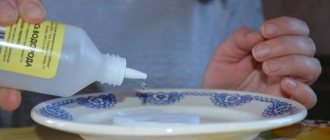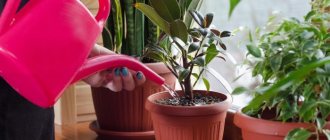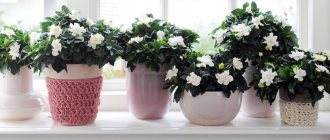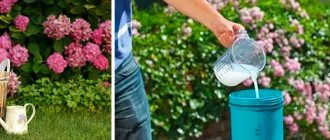Yulka
That is Fungus gnats
Once you improve your care, eliminate errors when watering, potassium permanganate is not needed.
Weak pink solution. You can also try a weak solution of planed laundry soap.
The seeds are soaked for 20 minutes in a 0.5% solution of potassium permanganate (0.5 g per 100 ml of water). Before planting the seeds of any vegetables or flowers, water the soil in the box with a special solution: 3-5 g of potassium permanganate per 10 liters of water. This will protect the seedlings of tomatoes, eggplant, peppers, cabbage from the “black leg”.
I wish you good luck!!!with caution. For example, you should not use eggshells for plants that prefer acidic soil, and coffee grounds for those that grow in alkaline soil.
10. Egg shells. Suitable for all plants, except those that prefer acidic soil (azalea, camellia, indoor hydrangea). To feed plants, an infusion is prepared once a month: eggshells crushed in a coffee grinder are poured with water and infused for 12-15 days in a dark place.
Herbal infusion for feeding plants without odor
This safe, natural fertilizer has one drawback: it smells very unpleasant. Moreover, if you still work with it without gloves, the smell remains on your hands for quite a long time. This problem can be solved by adding EM preparations (effective microorganisms) at the beginning of preparing the infusion. These can be ready-made, which can be bought in a store: Baikal, Siyanie, Vozrozhdenie, Gumate EM, Fitosporin.
Or you can use what everyone has on the farm. For example, sugar, honey or old jam. You can add an infusion of regular rice.
Pour ¼ cup of rice into 1 cup of water, stir thoroughly until the water turns whitish. Afterwards, pour the water into a separate cup and leave in a warm, dark place for about a week. Afterwards, the solution is filtered, milk is added in a ratio of 1:10 and again left to infuse for a week. After a week, the curd mass will separate from the whey; it must be separated. And add 1 tbsp to the whey. l. Sahara. And the EM drug is ready.
All EM preparations help to prepare fertilizer faster, and during its preparation there will be no unpleasant foul odor. On the contrary, it will be pleasant and reminiscent of the smell of kvass. In addition, these funds will then help restore beneficial microflora in the soil, its fertility, and increase the number of earthworms.
Using EM preparations in the preparation of herbal infusion, it is enough to add 70-100 ml of the working solution to all other components in a 10-liter bucket. Then stir, tightly close the container with a lid or thick film. Leave in a shaded place for 3-4 days.
Iodine
Iodine plays an important role in the processes in the body of humans and animals; the lack of this element greatly affects health. As for plants, iodine does not require special addition in fertilizing. Plants are able to capture iodine from the atmosphere; it is often found as impurities in fertilizers, and peat, which is the basis of most soils for indoor plants, contains it in significant quantities.
Plants clearly do not respond to iodine deficiency. However, the literature provides examples of its beneficial effect on some agricultural crops, but there is no exact explanation for this phenomenon yet. Plants are able to accumulate iodine in their tissues, which is very valuable when growing forage crops and vegetables, but for growing indoor plants that are not consumed as food, this ability is not important.
The stimulating effect of iodine on plants is noted at its content of 0.1 mg/kg in the nutrient solution. But already at a concentration of 0.5-1.0 mg/kg a toxic effect is observed. Thus, adding a large amount of brown algae ash to the soil causes iodine poisoning, which manifests itself in marginal chlorosis of adult leaves and dark green coloring of young leaves.
When using any substances while growing potted plants, it is extremely important to remember that the volume of soil is small, any careless application or exceeding the dose can have a detrimental effect on the plants.
When adding one drop of pharmaceutical iodine per liter of water, the iodine concentration will be approximately 1-2 mg/kg, which is 10 times higher than the stimulating concentration and turns it into a poisonous one. For a stimulating effect, it is enough to add a drop to a bucket of water, but such a volume is too large for house plants.
For open ground plants, a dosage of 1 drop per 3 liters of water is often recommended for watering and spraying against fungal diseases, which is closer to the norm; moreover, the volume of soil in the garden is much larger. Do not exceed at least this concentration, first test it on a small part of the plants, consider these treatments against diseases as preventative, and at the first signs of fungal diseases, use agrotechnical measures and fungicides to preserve the harvest.
We invite you to find out what plants grow in the meadow
Disinfection for flower bouquets
Every connoisseur of home vegetation tries to find the most effective ways to feed it in order to improve its external beauty, make it stronger, bloom and produce new shoots.
Potassium permanganate in this situation is a very interesting substance, which, when used correctly, has a positive effect on the general condition of the plant. There are several useful factors here:
- prevention of infections on those parts of plants located in the soil;
- extermination of pests of indoor plants;
- soil disinfection for subsequent planting of indoor plants;
- stimulating the growth of cuttings and seeds;
- accelerating the process of setting berries;
- fertilizer;
- disinfection for bouquets of flowers.
How to use potassium permanganate to get this or that result is described below.
This substance can be used to eliminate rot that tends to form on damaged bulbs, roots and tubers. Its most reliable use would be to soak underground organs directly during transplantation. You will need to immerse the damaged roots in a bowl filled with diluted potassium permanganate for 15 minutes. However, experts note that complete immersion of the bulbs and tubers in the solution will not be harmful, which, on the contrary, will serve for preventive purposes.
Thanks to a solution of potassium permanganate, earthworms will disappear from the soil, but flying insects will remain. In addition, when midges appear on flowers, it is recommended not only to treat the plant with special preparations, but also to analyze the process of soil moisture - perhaps mistakes have been made here.
This list of infections is not all that the substance can cope with. Experts note that to ensure a guaranteed result, the soil, work tools, and containers should be disinfected.
For prevention, it is recommended to water the plants approximately once every 6 months. However, if there is a problem, the vegetation should be treated with the substance much more often - about 1 time every 7 days.
If you water indoor flowers more often, you can cause the opposite effect and cause significant harm to the plants. In addition, experts advise using other drugs and substances together with potassium permanganate - iodine, ash, laundry soap, tobacco.
Of course, plants that grow in a meadow or garden cannot be classified as indoor flowers. However, this does not prevent us from placing them in a vase in our home and being content with their aroma and beauty. To disinfect water with flowers, you should add a little potassium permanganate to it. This manipulation will allow the bouquet to last much longer. A pink solution is very suitable for daffodils and tulips.
When preparing a solution in which a bouquet of wildflowers will be placed in the future, you must remember that at the end the water should have a soft pink tint. If you make the solution too saturated, the risk of cut flowers wilting quickly increases.
It is important to understand that despite all the usefulness of potassium permanganate, not every plant can withstand its effects. The plants presented below are suitable for an acidic environment:
- Fern.
- Cyperus.
- Begonia.
- Ivy.
- Gardenia.
- Hydrangea.
- Monstera.
- Dieffenbachia.
- Pouncetia.
- Chlorophytum.
These plants are ornamental foliage, bloom beautifully and can withstand acidic soil.
If we talk about orchids, not all gardeners believe that potassium permanganate will be useful for this hypersensitive plant. It is recommended to water exclusively the soil in which the flower is planted, or to treat the roots. However, the leaves and stem should not be touched so as not to harm the orchid.
So, if you brought home a bouquet of cut flowers or you want to improve the condition of indoor plants, potassium permanganate will come in very handy. However, experts recommend that you first study information regarding its use for a particular flower, since some plant varieties may not tolerate the effect of the pink substance.
Often, lovers of house plants have a question about how potassium permanganate is used for indoor flowers; its use requires knowledge of some subtleties. In particular, does a solution of potassium permanganate help against midges or infectious diseases, how to dilute the substance for spraying and stimulating plant growth. What flowers can be watered with potassium permanganate. All these questions will be discussed in this material.
Potassium permanganate saves from rot that appears on damaged roots, tubers and bulbs. It is advisable to use it when transplanting corms. If underground organs have been damaged, then after removing the rotten area, you can put them in a container with diluted KMnO4 for 10-15 minutes. But even whole tubers and bulbs cannot be prevented by keeping them in a pink solution of potassium permanganate.
Very often, potassium permanganate is recommended for indoor flowers against midges and other insect pests. Of course, you can try its application in practice for this purpose. But still, I would recommend that in such a situation you use stronger targeted insecticides. For example, “Grom-2”, “Aktara” or the equally effective “Aktellik” can help.
Potassium permanganate is not poisonous to flying insects, so it is difficult to obtain a positive effect. If there are midges on the flowers, you should also reconsider the soil moisture regime.
This substance helps get rid of earthworms if they happen to end up in a flower pot. These soil inhabitants are very useful and necessary in natural conditions, but in the limited space of a container they only cause harm to plants.
Powdery mildew, late blight, dangerous gray mold - this is not a complete list of infectious diseases against which potassium permanganate is effective. It is used as a prophylactic against fungus and as an active component in the fight against it.
When replanting plants, do not forget to disinfect not only the soil, but also the pots and tools for work.
If you grow fruit-bearing fruit crops at home (for example, strawberries, citrus fruits), then you can use a solution of microelements to stimulate fruiting. In this case, the use of potassium permanganate in combination with boric acid and ash gives good results.
The proportions of the starting substances for the preparation of such a product are as follows: potassium permanganate and boric acid - 1 g each, sifted ash - ½ cup, water - 5 liters.
The use of potassium permanganate as a stimulator of seed germination during the independent propagation of many indoor plants is justified. To do this, the seed buds are soaked in a KMnO4 solution for 30-40 minutes. At the same time, seeds are disinfected before sowing.
Soaking in a permanganate solution is also used in green cuttings. In this case, it is a mineral stimulator of root growth. Potassium permanganate can replace heteroauxin if you don't have it on hand.
The method of soaking seeds and cuttings can be used not only for indoor flowers, but also for garden plants. This is effective for cucumbers, peppers, cabbage, eggplants and tomatoes before sowing them as seedlings. It is also useful to soak the seeds of dill, parsley and other greens if you grow them on the windowsill.
Since this substance is a source of manganese and potassium, if there is a shortage of them, it is advisable to consider potassium permanganate as a plant food. To determine whether there is a deficiency of these elements, you need to pay attention to the following features.
Signs of potassium deficiency are:
- dull greenish-blue leaf color;
- yellowing of the leaf blade along the veins;
- brown or brown tips of leaves;
- lack of flower buds;
- curling of leaves along the edge.
Signs of manganese deficiency are:
- chlorosis between the veins or at the base of young leaves;
- brown spot and leaf dieback.
Of course, plants grown in a garden or meadow are not considered indoor plants. But, since we often put them in a vase at home, I thought it would be appropriate to talk about them. It is useful to add potassium permanganate to the water in which cut flowers stand. It disinfects the solution and thereby extends the shelf life of the bouquet.
The pink solution is especially useful for tulips and daffodils. But even when preparing a nutrient mixture with sugar, permanganate must be added to the water. But don't forget to dilute it first to a light pink shade.
We invite you to familiarize yourself with the Nailball and the Nailcube - the most catchy jigs
In different concentrations, a solution of potassium permanganate brings considerable benefits to plants. But what flowers can be watered with potassium permanganate? How often can I spray and water? Let's figure it out.
The frequency of watering indoor plants with manganese is determined by two factors. First, as already mentioned, potassium permanganate is a source of potassium and manganese. They are important and provide certain benefits to plants. But in large quantities they can have a negative effect on the development of the plant organism.
Secondly, when regularly watering indoor flowers with a KMnO4 solution, acidification of the soil occurs. Not all houseplants need and can withstand low pH values. That is why you should follow the watering and spraying regime.
If this procedure is needed for preventive purposes, then once every six months is enough. If the use of potassium permanganate for plants is due to some problem, then it is recommended to water indoor flowers more often - up to once a week.
More frequent watering can lead to undesirable consequences. Therefore, it is necessary to use other means in parallel to solve the problem. At home, ash, laundry soap, iodine, and tobacco can help out. In case of urgent need, it won’t hurt to buy professional products.
Despite the fact that the use of potassium permanganate is beneficial for plants, not everyone can withstand its effects. The list of suitable decorative foliage and beautifully flowering plants includes those who love acidic soils. First of all, these are tropical crops:
- Begonias
- Hydrangeas
- Ferns
- Tradescantia
- Cyperus
- Monstera
- Ivy
- Diefenbachia
- Gardenia
- Chlorophytum
- Zygocactus
- Paunsetia
- Do not allow potassium permanganate to interact with any other substances, especially aluminum, magnesium, phosphorus, etc. to avoid fire and explosions.
- Avoid direct contact with skin as potassium permanganate stains and dries the skin.
- Wear rubber gloves when handling the solution.
- twisting the sheet plate along the edge
- yellowing of leaf tips
- pale leaves
- chlorosis
- The ability to resist putrefactive processes. Dark purple crystals help save plants from rot that develops on damaged tubers, roots and bulbs. It is more effective to use them when transplanting corm crops. Treatment with potassium permanganate involves soaking for 10-15 minutes. damaged underground plant organs. Preventive measures using this drug will also be relevant.
- Action against pests. The working fluid works perfectly against midges on flowers and other parasitic individuals that oppress them with their vital activity.
- Antifungal effect. Potassium permanganate is often used as a prophylactic against powdery mildew, dangerous gray rot and late blight. To avoid the occurrence of such ailments, it is recommended to treat not only the soil substrate, but also the tools used, with a solution of potassium permanganate.
- Acceleration of fruit set. When growing fruit crops at home, for example citrus fruits, a weak solution of potassium permanganate, thanks to its beneficial components, stimulates the fruiting process. Especially if you use it together with wood ash and boric acid. The ingredients are taken per 5 liters of water: 1 g of boric acid, ½ cup of ash and 1 g of potassium permanganate.
- Activation of growth of planting material (seeds, cuttings). This use of potassium permanganate gives a positive result when breeding indoor crops. The seeds are kept for 30-40 minutes in pink liquid, which also allows them to be disinfected before planting in the ground. This technique is also useful for green cuttings, where the working fluid acts as a mineral growth stimulator of the underground mass. This is a worthy alternative to Heteroauxin. It is also effective to treat seeds of dill, parsley and other herbs with potassium permanganate when grown at home.
- The content of potassium and manganese allows the drug to be used as a nutritional mixture. But in order not to overdo it and not provoke undesirable consequences, it is necessary to add potassium permanganate to the soil only if there are obvious reasons for this, when there are no flower buds, leaves curl, leaf blades along the veins turn yellow, and the color changes to greenish-blue. These are all signs of potassium deficiency. If yellowing is observed between the veins or near the base of new leaves, there are brown spots, then there is a need to add manganese.
- The disinfecting properties of potassium permanganate make it possible to extend the shelf life of a collected or gifted bouquet. Dark purple crystals are added to the water that is in the vase.
- wireworm damaging root crops;
- flies of different types;
- slobbering pennies threatening strawberries.
How to use as a disinfectant
Potassium permanganate is used in this case as a solution:
- seed material and tubers are disinfected;
- inventory tools for gardening are processed;
- adding the solution to the soil layer before planting;
- treatment for preventive purposes in greenhouses and hotbeds.
Note to the gardener. The working solution is prepared at the rate of 0.5 grams of potassium permanganate per 100 ml of water. The soaking time for seeds and tubers should not exceed more than half an hour. Increasing the period leads to the fact that the seed material may suffer from burns and lose its suitability.
It is enough to wipe the garden tools using a concentrated solution of potassium permanganate. You can also simply leave the tools in it for 60 minutes.
For pre-sowing soil treatment, a working manganese solution is also used at the rate of 0.5 grams of the drug per liter of warm water, whose temperature must be at least 60 degrees.
In greenhouses and greenhouses, you can spray or simply wipe with a rag. For greater effect, take a strong solution that has a dark pink color. Potassium permanganate is widely used for preventive treatment of containers used for planting seedlings.
How to dilute the product
In various areas it is necessary to use solutions of potassium permanganate of different concentrations:
- For spraying, use a very weak solution - almost transparent with a slight pale pink tint. To obtain it, dissolve 1 g of crystals in 5 liters of water.
- To feed indoor plants, a solution of a more saturated light pink color is used, which is achieved by dissolving 1.5 g of potassium permanganate in 5 liters of water.
- To disinfect soil in pots, prepare a more saturated solution: 0.5 g of product per 1 liter of water.
- To soak the seeds, 1 g of the drug is dissolved in 500 ml of water.
To get the desired effect from use, you should take a fresh ready-made solution, which has been stored for no more than 3 or 4 days.
How I grow potassium permanganate for flowers
Stock and weak solution of potassium permanganate
I don’t have a lot of indoor flowers, therefore, a small volume of solution is needed to water them. Two liters will be enough. First of all, I prepare the mother liquor in a transparent glass, without particularly worrying about the level of its concentration. To do this, I pour warm water into the container. Then I soak the edge of a toothpick in it and dip it into a bottle of potassium permanganate.
I stir the stuck particles in a container with warm water. I stir until the crystals disappear completely. It is very important for flower growers to make sure that the potassium permanganate crystals are completely dissolved, because when undissolved elements get on the foliage of plants when watering or spraying, it will lead to chemical burns.
Then I mix the mother solution with settled water in parts in a watering container, achieving the required concentration.
This is much easier for me than trying to figure out the required number of KMnO4 crystals in a watering container right away. As luck would have it, I either grab a few of them, the solution is pale, or a lot at once, until it’s deep pink.
For those who are confident in themselves. Dilution of potassium permanganate must be done in a transparent glass container; it is convenient to control the quality of the solution in it. Pour warm water into the container to speed up the dilution. I advise you not to pour water to the edges of the dishes, it will be more convenient to mix, and by adding water you can always adjust the level of concentration of the solution.
We invite you to familiarize yourself with Voronets spicata - Voronets
Add potassium permanganate crystals to the water. For these purposes, use a moistened toothpick or a thin stick. Mix the solution thoroughly until the crystals are completely dissolved; even a small amount remaining can subsequently dramatically change the concentration of the solution and lead to chemical burns.
Add potassium permanganate crystals or water until the required concentration is obtained.
A weak solution of potassium permanganate, pale pink
Medium pink potassium permanganate solution
A strong solution of potassium permanganate the color of red wine
Disinfection of garden tools with manganese
Using such an inexpensive product as a saturated solution of potassium permanganate, you can disinfect garden equipment. Particular attention should be paid to cutting tools: pruners, scissors, knives, saws, axes. It is recommended to treat them before each use, especially if you have previously worked with diseased plants.
Also treat peat containers and tablets with a solution of potassium permanganate to prevent mold from appearing on them.
- What to grow seedlings in - choosing the right container
Let’s take all the containers apart “piece by piece” and tell you why plants don’t “like” peat pots and what dangers seedling cassettes pose.
Prolonged inhalation of potassium permanganate vapor in a closed room can lead to poisoning, so be sure to wear a respirator and rubber gloves.
Large tools - pitchforks, shovels, rakes, etc. – usually washed at the end of the season. To do this, prepare a bowl of water, add a few tablespoons of potassium permanganate to it until the solution acquires a rich crimson color, and carefully wash all equipment with a sponge or rag. It is better to do this with gloves. Then dry the tools and store them.
As you know, potassium permanganate perfectly disinfects, so it is useful to use it for soil in garden beds. The soil should be etched with a weak solution. Add 5 g of potassium permanganate to 10 liters of warm water and wait until all the crystals dissolve. Place the prepared solution in a watering can and water the beds evenly.
Potassium permanganate oxidizes the soil, so it is better to use it on neutral and alkaline soil, or be sure to add lime after treatment. However, you should not use nitrogen fertilizers at the same time - they also make the soil acidic.
Watering with potassium permanganate only affects the surface layer of soil and does not kill all soil pathogens. Therefore, be sure to supplement this method with others, for example, disinfect with insecticides and fungicides.
- Soil disinfection from fungal infections
Effective methods for disinfecting soil in the garden.
Potassium permanganate for plants: use in the garden, vegetable garden, for indoor crops
In order not to once again flood plants whose fruits are used for your own needs with chemicals, you can use potassium permanganate or potassium permanganate, sold in a pharmacy.
The solution is strong enough to eliminate fungal spores from growers' tools, or greenhouse interiors, or even in the soil. This substance is used at all stages of excavation work - from soaking the seeds to the moment of harvesting and after it - in the fall.
Potassium permanganate for plants is both a medicine, a fertilizer, and an antiseptic. But it must be applied based on the task at hand. The strength of the solution for seeds and for wiping tools will be different - if you mix up the concentrations, the plants will get foliage burns.
Is it worth watering indoor plants with diluted vodka (moonshine)
Vodka is considered one of the best edges; many people replace it with moonshine. A small amount of diluted vodka will help revive a fading flower. Alcohol stimulates growth and flowering, enhances synthesis. In the near future, a rarely flowering plant will release its long-awaited buds. Flowers after such watering grow strong, healthy, by leaps and bounds.
Potassium permanganate for parasites and pests
It is believed that a solution of potassium permanganate not only disinfects and disinfects, but also helps in the fight against insect pests. There is a deal of truth in it.
My experience shows that potassium permanganate can be used in combination with other pest control agents, but do not rely on it alone, since potassium permanganate is not a poison for most insect pests.
Potassium permanganate alone will not help you cope with insect pests.
Will potassium permanganate help against midges? No - you cannot remove flying insects from your plant using potassium permanganate alone. Use special insecticides for this. To combat insect pests, I advise you to use ready-made preparations Fufanon and Actellik.
Advantages and disadvantages
Like any other remedy, potassium permanganate has its pros and cons.
The advantages include:
- ease of use;
- good disinfectant effect (the drug is effective for both prevention and treatment of diseases);
- When it is used, plants are fed.
Disadvantages of the product:
- today it is not available everywhere;
- there are modern, more effective substances;
- not effective against pests;
- in some cases it can harm seedlings.
In order for potassium permanganate to bring only benefits and not harm, it must be used correctly. This is very simple to do: follow the proportions and do not water the seedlings with a dark purple solution.
You also need to stir thoroughly until the crystals dissolve completely. Although the solution is non-toxic, it is better to use it with gloves.
Sometimes there is an individual intolerance to the drug, so it is better not to get it on the skin. We must try to ensure that the entire earth is saturated, but without excess.
Marina Turilina
No! These are for flowers as vitamins are for people. Plivate is a must.The potassium permanganate solution is prepared in the following proportion: 3 grams per 10 liters of water. If you soak the seeds in a solution of potassium permanganate before sowing, this will not only disinfect them and destroy pathogens, but also provide a starting supply of manganese (which promotes plant growth).
As a result, you can get rich and environmentally friendly products.homemade fertilizers for indoor flowers9. Banana skins. You can dry them, grind them in a coffee grinder and add a teaspoon per glass of clean water during weekly watering. It is good to add crushed banana powder to the soil when replanting plants.
We invite you to familiarize yourself with Tulips at home in a vase
Or you can infuse fresh banana peels in a liter of water for 24 hours, and also use this water as a potassium and nutritional supplement. It is quite possible to feed your green indoor friends with homemade nutrient mixtures. Let's talk about what kind of powder you're using in vain, it's better to dilute the garlic in water on a grater and add it. It's possible, but it's better to use a special remedy for midges. There's also Fitoverm, it's less toxic and very weak.
Disinfection of garden tools with manganese
If the plants were sick last year, be sure to treat the greenhouses and greenhouses with a solution of potassium permanganate. It wouldn’t hurt to do this to prevent diseases. The solution can be made deep pink, and a soft cloth or sponge can be used as a tool. For work, be sure to wear rubber gloves and a respirator.
Treatment of greenhouses and greenhouses with potassium permanganate takes place in several stages:
- remove plant debris, rotten ropes, etc.;
- clean the frame and walls from dirt;
- wash all building elements with a solution of potassium permanganate (2-3 tsp per 10 liters of water);
- wash the door and threshold thoroughly;
- wipe the outside of the building.
After treatment, ventilate the greenhouse and greenhouse, leaving them open for several days.
- Preparing a polycarbonate greenhouse for spring planting
As soon as the snow melts at the dacha, you need to start preparing the greenhouse for planting. It consists of several stages, so give it a couple of days.
The recipe for fertilizer with potassium permanganate is as follows:
- boric acid 1/3 teaspoon
- potassium permanganate on the tip of a toothpick
- 3-5 drops of iodine
- 3 liters of water
Boric acid must be dissolved separately in warm water (40-45 degrees), until the crystals are completely dissolved. Also dissolve potassium permanganate in a prepared container in 3 liters of water until a pale pink color is obtained. Then add 3-5 drops of iodine. Lastly, add dissolved boric acid. With this solution it is necessary to carry out both root and extra-root feeding of domestic plants.
Important! Fertilizing should only be done on watered plants; it is not recommended to apply fertilizing to dry soil.
A solution of potassium permanganate allows you to compensate for the lack of microelements such as potassium and magnesium. In addition, it has a beneficial effect on fruiting indoor plants, such as pomegranate, persimmon, citrus fruits (lemon or orange). But an excess of microelements can lead to undesirable consequences. Therefore, do not abuse this substance.
Yulia Vdovichenko
And what was swarming in your friend’s pot is called FUCKERS.14. Water after washing cereals (barley, buckwheat, rice, peas, millet). Such watering will saturate the soil with nutrients.3. Aspirin. One tablet per liter of water at room temperature, and the solution for spraying leaves and flowers is ready.
This treatment increases the immunity of all plants. I don’t know about insecticides... judging by the name, they kill insects, not arachnids :) Midges - change the soil... You can reduce everything proportionally by 2,5,10 times - depending on how much solution you need.And what do you want to treat the plants for?
But...to avoid pests and plant diseases, by the way, spraying and fertilizing, and also not bad in the fight against plant diseases - it copes. As for the negative effect of potassium permanganate... You see, in your case it is of NO use. But too much watering with potassium permanganate means excess moisture.
And small insects hatch and breed in large numbers precisely in conditions of high humidity and damp soil. So in this sense, potassium permanganate will be somewhat harmful. To disinfect the soil in greenhouses, it is recommended to pour up to a liter of a solution prepared from 2 g of potassium permanganate and 10 liters of water into the holes intended for planting seedlings of tomatoes, cucumbers and other crops.
The acidic reaction of the soil (at a pH below 6.0) favors the absorption of Mn2 by plants; a slightly alkaline reaction (pH above 7.5) stimulates the formation of Mn(OH)2 hydrate, which is difficult for plants to absorb. Fungus gnats
What benefits are contained in potassium permanganate?
Dark purple crystals are of particular value for plants because they contain two important chemical elements - manganese and potassium. The formula of potassium permanganate is KMnO4. A solution of potassium permanganate works well as a disinfectant; it is good to soak seed in it to destroy pathogenic microorganisms and saturate the seeds with a starting supply of manganese. When using potassium permanganate, the grown products are environmentally friendly and rich in useful components.
In addition, manganese acts as an accelerator of the respiration process in plants, which is involved in photosynthesis. If we take into account the high redox potential of this chemical element, its benefits for plant cells can be compared with the value of iron for animals. Pink working liquid is often used to disinfect the soil substrate; for example, it helps to get rid of Saintpaulia that accidentally got into a flower vessel.
Plants absorb this microelement best when the soil is acidic (from 6.0 pH); if the acidity level is above 7.5, then difficult-to-digest Mn(OH)2 hydrate is formed.
Potassium, like manganese, belongs to the group of vital elements for green spaces. It increases their immunity and level of resistance to adverse environmental factors. A particularly acute shortage of it is experienced by young plants that are in the stage of active growth and development. Thanks to it, sugars and amino acids are transported in tissues, water metabolism and the process of photosynthesis are regulated.
The use of potassium permanganate for flowers, despite a number of positive factors, should be done in doses, since an excess of substances beneficial to plants is just as dangerous as their deficiency.
If we consider potassium permanganate from a pharmacological point of view, it has antiseptic and deodorizing properties. Therefore, it is often used for disinfection. Do you know how to extend the shelf life of cut flowers? Also using potassium permanganate. Place the cut bouquet in a solution of potassium permanganate and your bouquet will delight you with its flowering for a long time.
Before deciding whether it is possible to water indoor flowers with potassium permanganate, I suggest looking at its composition. The main useful elements here are potassium and manganese. Let me remind you of the chemical name - potassium permanganate with the formula KMnO4.
Potassium is a macronutrient, manganese is a micronutrient. Both are considered irreplaceable and vital. If the plant’s “nutrition” is missing or there is not enough of one of them, then it begins to get sick and may even die.
Potassium is especially necessary for young, actively growing plants. It is responsible for the transport of sugars and amino acids in tissues, for water metabolism, as well as for the processes of photosynthesis.
Manganese also plays an important role in the photosynthesis and respiration of plants, helps the synthesis of vitamin C and a variety of sugars, and affects the development of fruits. A lack of manganese leads to a disease called chlorosis, as a result of which yellow-gray spots appear on the leaves, after which the leaves begin to die.
In addition, microorganisms that live in the soil and absorb atmospheric nitrogen increase their activity under the influence of manganese.
However, an excess of this element is just as harmful as its deficiency. Everything should be in moderation. The benefits and harms in this case depend on you.
A weak solution of potassium permanganate can help control pests of your green friends. For example, with putrefactive bacteria and fungi. True, in this case, watering the soil will not help. You need to make a bath for infected roots when transplanting them into another pot with clean, uninfected soil.
Experts advise removing the diseased, rotten parts, and immersing the roots in a warm pink permanganate solution for ten minutes. This, by the way, will help not only the roots, but also the bulbs affected, for example, by black rot.
Permanganate from the tribe on earth also helps. To achieve a good effect, you must first remove the top layer on which mold has already appeared, then dry the soil thoroughly. After which you need to add fresh soil instead of the removed soil and water it with a weak solution of potassium permanganate. Most often, this is enough to stop mold growth.
Well, if you didn’t keep track, and it got to the roots, then only a complete replacement of the soil, replanting and baths of potassium permanganate for the roots will help.
But potassium permanganate does not help against midges in the ground; it only gives a temporary effect, after which they appear again.
But it helps to “survive” earthworms from a flower pot if they somehow ended up there. Two or three waterings - and the uninvited guests will leave the pot; all that remains is to catch them and take them outside.
So, to summarize, why watering with potassium permanganate is needed:
- prevention of diseases caused by a lack of potassium and manganese,
- fertilizing for successful growth and development of plants,
- increasing soil acidity.
